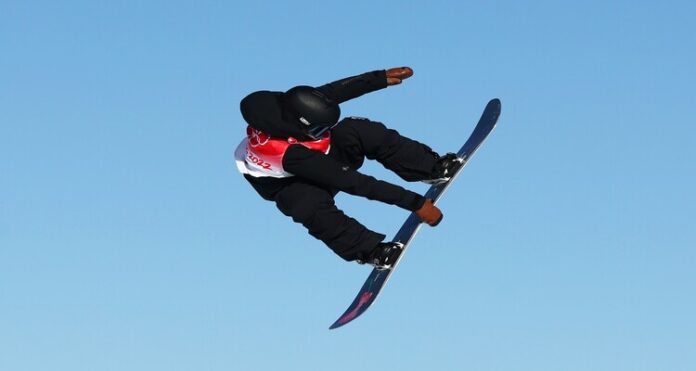
China’s ZHANGJIAKOU In the women’s slopestyle, American Julia Marino came close to winning gold, but New Zealand created Olympic history instead.
Zoi Sadowski Synnott won New Zealand’s first Winter Olympic gold medal on Sunday, pounding down a pressure-packed run on her final journey down the mountain.
The 20-year-old was one of the few to complete a perfect run on a supersized course where hardpacked snow and bone-chilling wind chills tested all 12 competitors, including two-time reigning champion Jamie Anderson, who finished eighth.
Sadowski Synnott was behind American Julia Marino in the final of her three races, but she came out on top. Nonetheless, it was the Americans’ first medal at the 2022 Beijing Olympics.
On the second-to-last jump, she nailed a double-cork 1080 with a strong grasp of the centre of the board and held it long enough for the judges to see it clearly. Then she did the double cork in a different direction, much as she did when she won the Winter X Games last month, becoming the first woman to do so.
She knew what she’d done as she lifted her hands in the air after landing. Marino, who took silver, and Australia’s Tess Coady, who finished third, both knew it. To celebrate, they tackled her at the finish line.
The scoreboard revealed the result a few minutes later, and New Zealand had won its first Winter Games, thanks to an Australian-born shredder with an American mother and a Kiwi father. When Zoi was six years old, the family relocated to Wanaka, New Zealand.
This was hardly the best display of female snowboarding skill at the Olympics for the second year in a row. A fierce, fluctuating wind transformed the competition into a demolition derby in Pyeongchang four years ago.
Anderson, an American, managed to survive that day and win her second gold medal while employing techniques that were far from cutting-edge.
The wind wasn’t an issue four years later, but the super-hard snowpack and the course’s vastness — which included ice-block reproductions of The Great Wall and even a pagoda-roofed “guard house” to run rails off — made it difficult for everyone. Even with the sun shining, the temperature at the start of the competition was 3 degrees Fahrenheit (minus-16 degrees Celsius) with a minus-13 (minus-25) wind chill.
25 of the 36 runs were cancelled due to falls or speed concerns that made navigating the most difficult jumps too dangerous. The only mark over 90 was Sadowski Synnott’s winning score of 92.88.
Sadowski Synnott became the first woman to complete back-to-back double cork 1080s as part of her gold-medal performance just two weeks ago in ideal circumstances in Aspen, Colorado. She also won large air, and she will have the opportunity to do so in the Olympics, which will take place on February 15th. Four years earlier, she took bronze in the event.
For the time being, though, there’s much to celebrate in New Zealand, which has traditionally acted as a training ground for Northern Hemisphere riders looking for work in the months of June, July, and August.

















